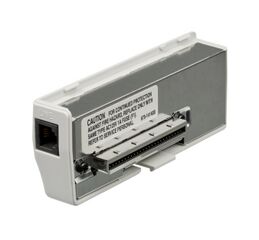Dreamcast Modem
From Sega Retro

| ||||||||||||||||||||
| Dreamcast Modem | ||||||||||||||||||||
|---|---|---|---|---|---|---|---|---|---|---|---|---|---|---|---|---|---|---|---|---|
| Made for: Sega Dreamcast | ||||||||||||||||||||
| Manufacturer: Sega | ||||||||||||||||||||
|
The Dreamcast Modem is an accessory for the Sega Dreamcast, allowing it to connect to the internet.
All Dreamcast Modems shipped with Dreamcast consoles, being already plugged into the side of the system when unpacked, and were not made available separately. Its existence guaranteed that all Dreamcast users had potential access to the internet from the get go - a first for the video game industry and something not matched by competitors until several years later.
In Japan, all modems had a download speed of 33.6kB/s, which was upped to 56kB/s for North America and Europe. Neither modem significantly changed during the console's run, though there were a number of minor revisions (including Sega swapping chips designed by Rockwell to those by Conexant) dictating whether the power should be drawn from the console or through the phone line.
While slow by today's standards, in 1998/1999 this style of dial-up internet connection was commonplace, and would remain (despite the likes of Sony and Microsoft claiming otherwise with the PlayStation 2 and Xbox respectively) the dominant form of internet connection for years to come. While the likes of Quake III Arena were optimised with 56kB/s modems in mind, Sega would anticipate the adoption of broadband with the Dreamcast Broadband Adapter in late 2000, which could replace this built-in modem. Both share an outward appearance, though the Dreamcast Modems has "LINE" printed on the back rather than "LAN".
References